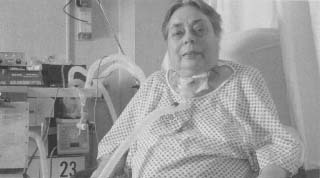Tracheotomy
A tracheotomy is a potentially life-saving surgical procedure. During a tracheotomy, an opening is made in a patient's windpipe to relieve airway obstruction. A tube inserted into the trachea through the throat allows breathing to continue through the tube and bypasses the mouth and nasal passages. After the emergency has passed, the tube can be removed and the opening closed.
The first tracheotomy was performed in 1825 by French physician Pierre Bretonneau (1778-1862). Bretonneau operated on a four-year-old girl whose throat had become obstructed with the scar tissue, the result of diphtheria (a disease characterized by weakness, high fever, and the for-mation

Tracheotomies are used today to treat choking victims, as well as patients with severe burns, poliomyelitis, respiratory infections, and cancer.
Comment about this article, ask questions, or add new information about this topic: